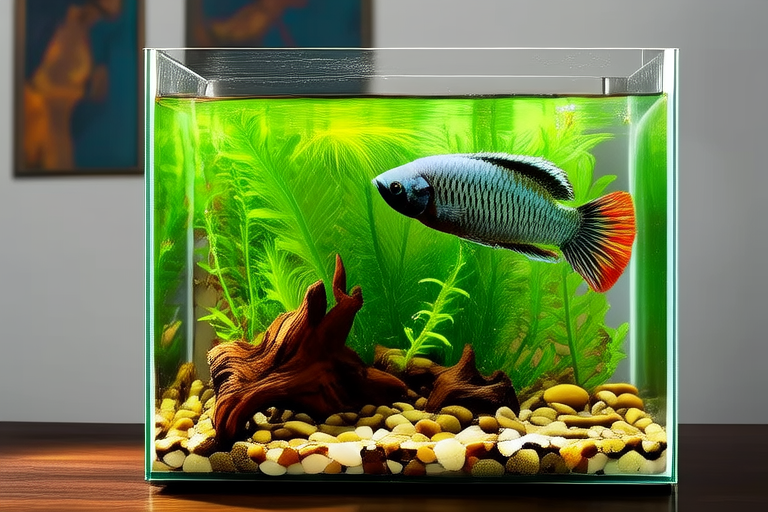How to Create an Oasis for Your Betta: Tank Setup Tips
Welcome to the world of Betta care! Creating the perfect habitat for your Betta fish is crucial for their health and happiness. This guide will walk you through setting up a tank that mimics their natural environment, ensuring your Betta thrives in its new home. We’ll cover tank size recommendations, filtration systems, temperature and pH levels, decorations, lighting, plant selection, and more.
Tank Size Recommendations
A common misconception is that Bettas can live in small containers. In reality, they require ample space to swim freely. A minimum tank size of 5 gallons (19 liters) is recommended for a single Betta. Larger tanks offer more stability in water parameters and provide better swimming opportunities.
Filtration System Details
Selecting the right filter is vital for maintaining water quality. Look for filters that provide gentle water flow, as Bettas prefer calm environments. Undergravel or sponge filters are excellent choices due to their minimal disruption of water currents. Ensure the filter’s capacity matches your tank size and provides adequate filtration for ammonia, nitrite, and nitrate removal.
Temperature and pH Level Guidelines
Bettas thrive in warm waters with temperatures between 76°F and 82°F (24°C and 28°C). Use a reliable aquarium heater to maintain these conditions. The ideal pH range for Bettas is between 6.5 and 7.5. Regular testing with a pH kit helps monitor these levels, ensuring your Betta remains comfortable.
Appropriate Decoration Ideas
Decorations play a significant role in creating a stimulating environment. Provide hiding spots like caves, driftwood, and dense plantings to reduce stress. Floating plants or leaves create shade, replicating natural habitats. Ensure decorations have smooth edges to prevent injury.
Swimming Areas
Designate open spaces for swimming. Avoid overcrowding with decorations, allowing room for exercise. Incorporate vertical elements like tall plants or ornaments to encourage exploration.
Lighting Considerations
Choose lighting that promotes plant growth without causing excessive algae. LED lights are energy-efficient and come in various color temperatures. Aim for 8-10 hours of light per day, simulating a natural day-night cycle. Avoid overly bright or harsh lighting that may stress your Betta.
Compatible Plants
- Anubias nana: Low-maintenance and hardy, perfect for beginners.
- Cryptocoryne wendtii: Thrives in low-light conditions and adds aesthetic appeal.
- Java Fern: Easy to care for and adaptable to various water conditions.
- Hornwort: Provides hiding spots and helps control algae growth.
- Dwarf Sagittaria: Creates a lush, vibrant backdrop.
Ensure plants are aquarium-safe and free from pesticides. Introduce them gradually to allow for acclimation.
Water Quality Maintenance
Regularly test water parameters for ammonia, nitrite, nitrate, pH, and temperature. Perform partial water changes weekly, replacing about 25% of the tank volume. Clean filters and decorations periodically to prevent debris buildup.
Regular Tank Cleaning Routines
Establish a routine for tank maintenance. Remove uneaten food and waste daily. Scrub the tank glass weekly to remove algae. Inspect equipment regularly for signs of wear or malfunction. Maintain logs of water tests and maintenance activities for reference.
Selecting the Right Substrate
Choose substrates carefully, considering aesthetics and functionality. Sand or fine gravel are popular choices, providing a natural look while preventing injuries. Avoid sharp or large substrates that could harm your Betta. Some aquarists opt for bare-bottom tanks for easier cleaning.
Common Mistakes to Avoid
- Overcrowding: Limit the number of decorations and plants to ensure adequate swimming space.
- Inadequate Filtration: Invest in a suitable filter to maintain water quality.
- Improper Temperature Control: Use a heater to maintain consistent water temperatures.
- Lack of Hiding Spots: Provide sufficient hiding places to reduce stress.
- Ignoring Water Changes: Regular water changes prevent toxin buildup.
Conclusion
Creating an oasis for your Betta involves careful planning and attention to detail. By following these tips, you’ll provide your Betta with a healthy, stimulating environment. Remember, the key to a thriving Betta is a well-maintained tank. Happy fishkeeping!
